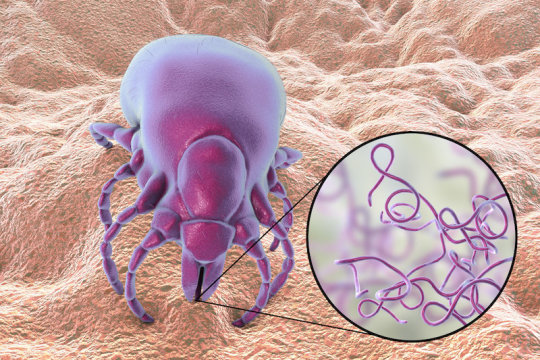[ad_1]
As Lyme disease increases, researchers have taken a significant step toward finding new ways to prevent its transmission. The experts, who include a pioneer in Lyme disease discovery, have sequenced the genome of the animal carrying the bacteria that causes the illness. The advance by researchers at the University of California, Irvine and colleagues provides a launching pad for fresh approaches to stopping Lyme disease from infecting people.
Results of their study appear today in Science Advances.
The scientists dedicated four years to decoding the genetic makeup of the white-footed mouse Peromyscus leucopus, which harbors the Lyme disease-causing bacteria. Unlike mice that scurry into human homes, these rodents inhabit forests, shrubbery and wetlands. People become infected when a tick bites them after feeding on a white-footed mouse carrying the bacteria.
“Many efforts to combat Lyme disease have focused on trying to control those ticks, but they have been difficult to put in practice,” said Lyme disease pioneer Alan Barbour, M.D. “So we decided that instead we should look at the animal carrying it.”
Barbour co-discovered Borreliella burgdorferi, the bacteria causing the illness. He is a professor of medicine and microbiology & molecular genetics for the UCI School of Medicine.
As a next step in examining the white-footed mouse’s role in Lyme disease’s spread, Anthony Long, Ph.D., professor of ecology & evolutionary biology in the UCI School of Biological Sciences, worked with Barbour and other researchers on the complex task of determining the DNA letter sequence that makes up the animal’s genome. With 2.45 billion of those letters, representing nucleotides that form DNA’s basic structural unit, its genome is similar in size to that of humans.
“If you want to understand a species, knowing its genetic blueprint is invaluable,” said Long, a geneticist and genomicist. “It provides a road map that makes new research approaches much faster and more efficient.” While these rodents are called mice, they are more closely related to hamsters than to the house mouse and the researchers’ new data emphasized this fact.
With the genome in hand, the scientists are interested in pursuing several potential avenues for preventing Lyme disease transmission. Among them are developing an environmentally-safe, humane vaccination method for white-footed mice in the wild, a process already used to prevent rabies transmission in other kinds of animals.
They also would like to find out why the rodents don’t develop Lyme disease even though they carry the bacteria. “Understanding what shields them from getting sick could guide us in protecting humans from it,” Barbour said. He noted that besides harboring Lyme disease, the rodents carry other emerging infections, including a form of viral encephalitis and illnesses similar to malaria and Rocky Mountain spotted fever.
The white-footed mouse genome is now available for free download to all who are interested in Lyme or in the additional disease-causing microorganisms that can be transferred from the rodent carrier to humans. The scientists say they hope the information will help others in the quest to fight this transmission.
As they move forward with their investigations, the researchers say it remains very important for the public to continue safeguarding against Lyme disease by preventing tick bites. Information on how to protect people, pets and yards from the insects is available on the Centers for Disease Control and Prevention website.
The reported number of confirmed and probable Lyme disease cases in the United States rose more than 17 percent between 2016 and 2017, increasing from 36,429 to 42,743, according to the CDC. Noting that those figures likely represent only a fraction of the actual amount, it also says reported cases have tripled since the late 1990s.
The CDC cites several factors as contributing to Lyme’s rise, including the growth of forests in what were once agricultural fields, the development of suburbs in those areas, and changes in ecological patterns due to climate change.
[ad_2]















